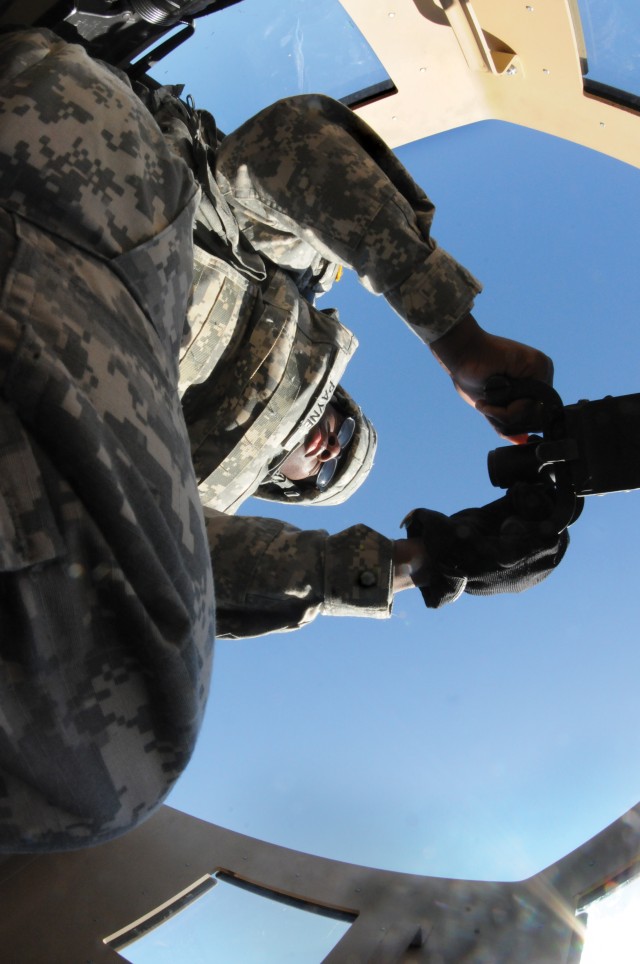FORT PICKETT, Va. (March 18, 2010) -- The 109th Quartermaster Company\'s Spc. Eric Traslavina now knows what to look for. After participating in two iterations of the 7.2 mile convoy lane training held at Fort Pickett, he understands what it takes to successfully navigate the course.
"I've learned how to scan my lanes," said the Soldier. "I learned how to be more aware."
That's precisely what Capt. William Bauserman wants to hear. The 109th commander doesn't expect any of the 193 Soldiers who trained on the convoy lane March 16-18 to show any vast improvement, but he does want to see some progress.
"As a company commander, I assess where the Soldiers were when we first came out here, what we're trained on, and how we progressed this week," he said just before the last iteration. "The first time we ran these iterations on Tuesday, there were a lot of mistakes, a lot of issues, but now all the battle drills are getting fixed."
The 109th, an element of Fort Lee's 240th QM Battalion, 49th QM Group, will at some point deploy to the Middle East, where convoys have at various times become the opposition's primary means for engagement. That's why the unit conducted scenario-driven training at the Virginia Army National Guard Maneuver Training Center last week -to further individual and team skills and ultimately, to save lives.
"This training is designed to run us through our troop procedures and battle drills," said Bauserman. He then posed questions regarding all that can occur during an operation: "What are your reactions to contact - with small arms fire, IEDs or any of the other things that are on the roads - what do we do and how do we react to those situations'"
The training served to answer those questions. Traveling in convoys of about nine vehicles, mostly Humvees and Light Medium Tactical Vehicles, Soldiers travelled a course that featured stretches of woods, downed vehicles, overpasses, small villages and marketplaces with harassing pedestrians. The convoys were ambushed, attacked with small arms fire and confronted with a variety of improvised explosive devices.
Sgt. Yussef Makki, a 2nd platoon Soldier, said the training helped Soldiers fine-tune their processes. "There are a lot of things that you can't catch in the book or in class," he said. "The hands-on training allows you to get all the details and gives you the opportunity to evaluate yourself in reacting to the situation."
Sgt. 1st Class Frederick Hinton, 2nd platoon sergeant, said the various scenarios added a measure of realism to the training. "Every scenario helps, and we were just trying to hit them with a little of everything," he said.
Traslavina, who has never deployed, said the lane training left him with a good idea of what is required in the Southwest Asia area of operations, especially concerning the arduous task of trying to spot danger before it happens.
"It's so hard because you're driving so fast," he said. "But you get better at it."
Bauserman said the training went well, but it's just a first step.
"We have several other exercises planned," he said. "We have counter-IED lanes, in which a team from Fort Bragg (N.C.) will come to train us. We have that training all next week. And then about a month from now, we have the lane validation where the battalion comes out and validates our convoy live fire and our lanes."
To Soldiers like Traslavina, it all serves to make him and his fellow Soldiers more proficient in convoy operations. For that reason, the training is invaluable, especially from a personal standpoint.
"It means a lot to me," he said, "because it's what we're going to be doing over there and I want to come back to my Family."


Social Sharing